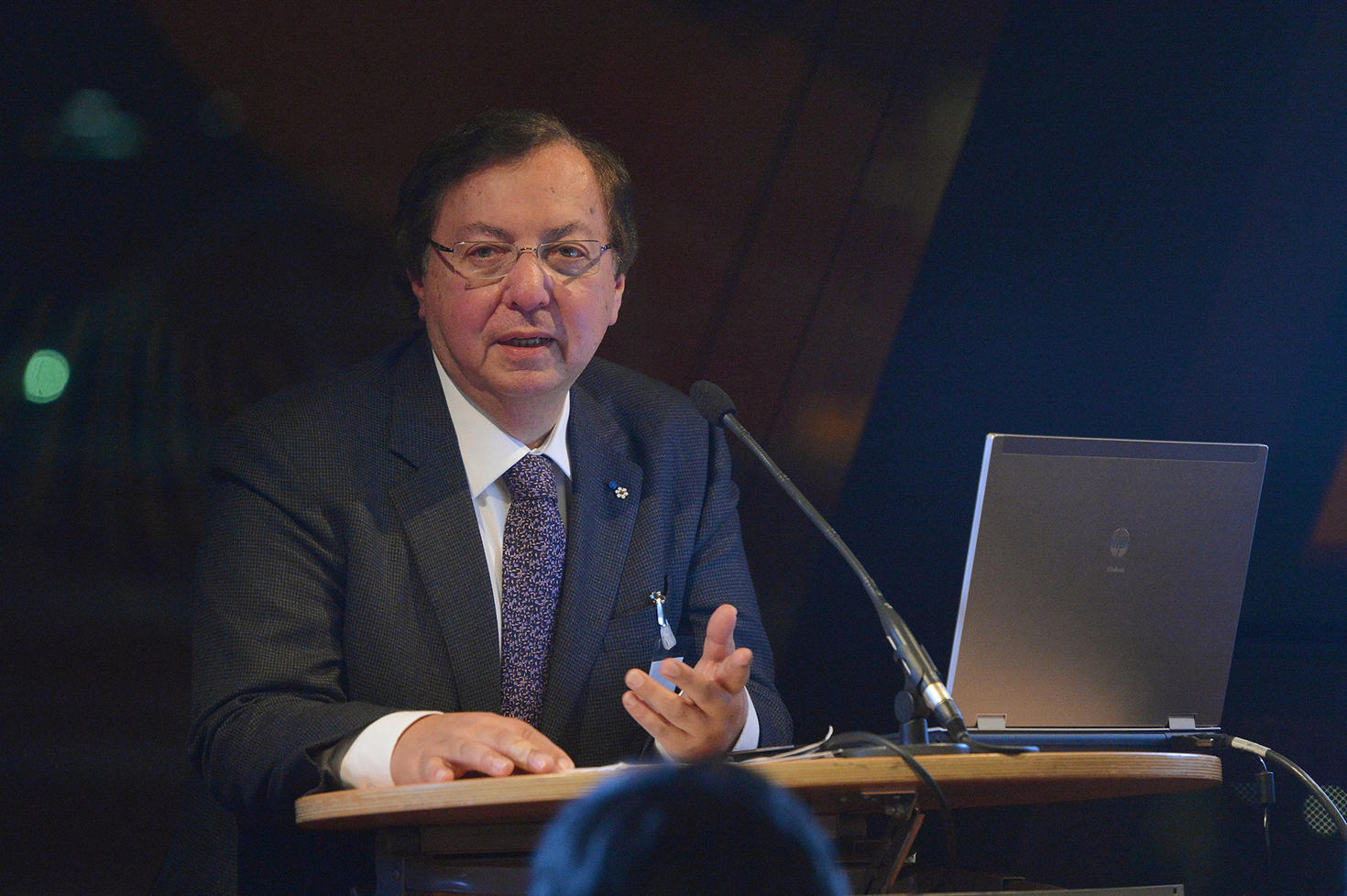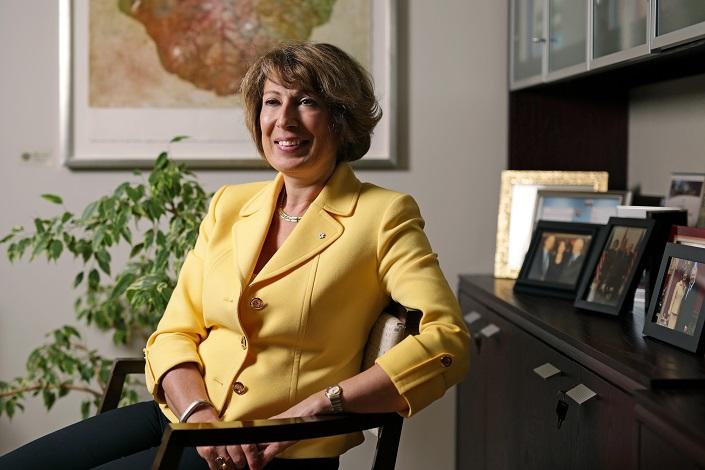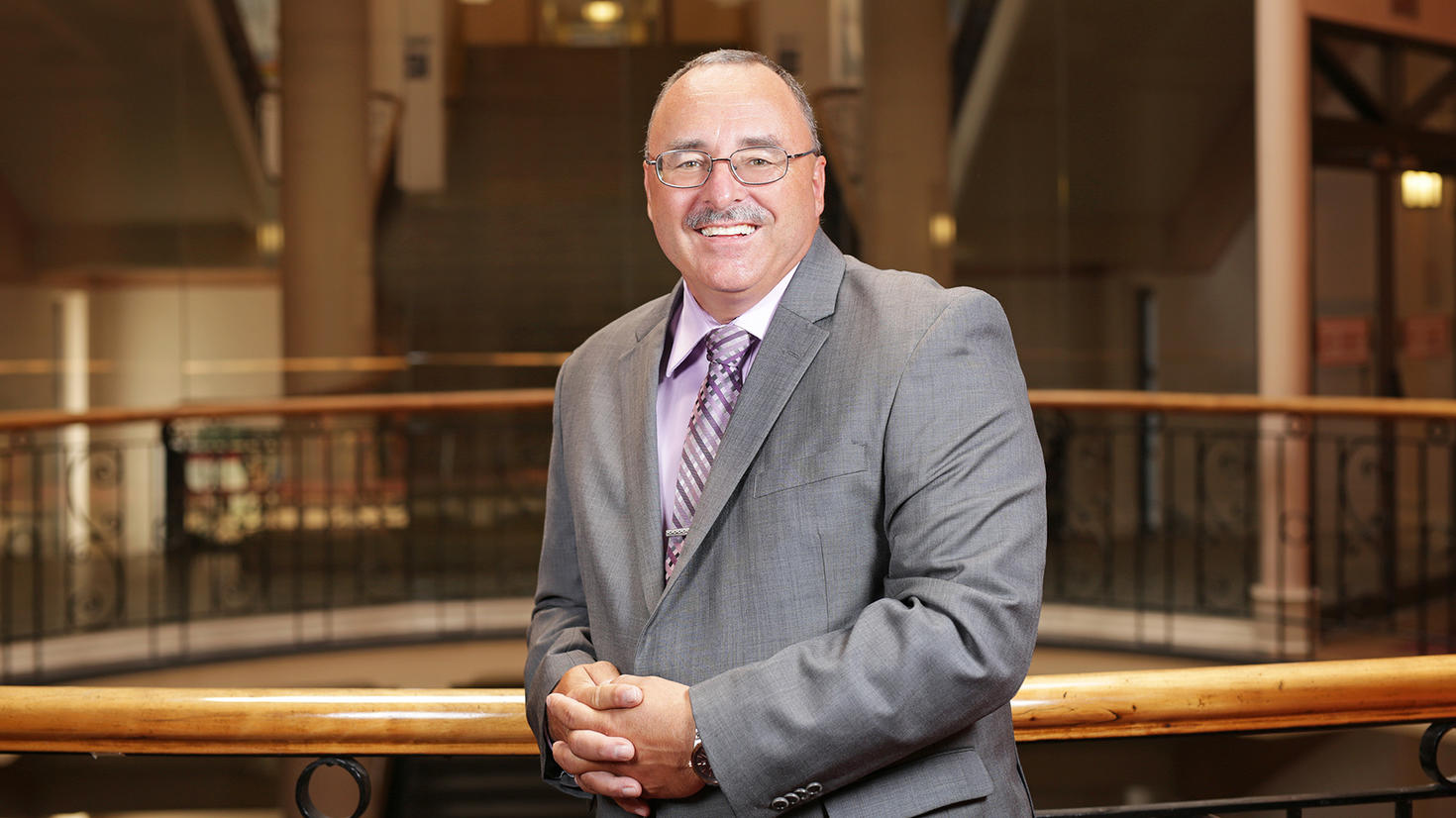The First Vice-President, Research: “Excellence as the Signature”
Distinguished University Professor Howard Alper
Two terms between 1997 and 2006
“The University of Ottawa was one of the very last major universities in Canada to establish the position of vice-president, research.” – Howard Alper
Distinguished Professor Howard Alper joined the University of Ottawa in 1975 as a professor of chemistry. He then served as chair of the department from 1982 to 1985, and again from 1988 to 1994. The year 1997 was a significant one in his career: the University of Ottawa approached him to serve as its first vice-president, research.

“Being the inaugural Vice-President, Research was pivotal in seizing new opportunities to transform the institution from average to first-rate.”
Howard Alper, Distinguished Professor and former Vice-President, Research
“Modernizing the University of Ottawa by working with administrative leadership colleagues, deans, chairs, professors, support staff, students, and postdoctoral fellows in a totally transparent, inclusive, and collegial manner was very important to me,” said Alper. “This cohesive approach resulted in the creation of the Strategic Areas of Development, which were approved unanimously by the Senate. It demonstrated to the community that the stakeholders were rowing in the same direction.”
Establishing “excellence as the signature” for the Office of the Vice-President, Research (OVPR) and witnessing contagious enthusiasm in this context was key to the success of this very first vice-president, research.
It was imperative for Professor Alper to demonstrate this inspirational policy leadership impacting “not only us, but other high-quality Canadian universities, especially on an international basis.” For example, in 2000, his work in partnership with the scientific counsellor and colleagues at the French Embassy, and in collaboration with the presidents of 20 high-quality Canadian universities who supported the initiative, resulted in the creation of the France-Canada Research Fund. “This has become a key component of Franco-Canadian scientific cooperation,” stated Alper.
“The Canada Research Chairs program was a vehicle to recruit the best researchers in the world to achieve aspirational goals in a nimble fashion,” said Alper. It was a primary focus of the two terms he completed in 2006.
“It was satisfying to conclude my nine-year adventure with the University being ranked sixth in the nation in research intensity, appreciably higher than in 1997 when I took on the responsibility,” he concluded.
Second vice-president: international outreach
Professor Mona Nemer
Two terms between 2006–2017
“The greatest research achievements are often the fruit of close international collaborations. They benefit not only universities and governments, but also — especially — citizens of the countries involved.” — Mona Nemer
Mona Nemer joined the University’s Faculty of Medicine in 2006 as a professor and researcher in cardiovascular health. Named to the central administration as vice-president, research, at the same time, she succeeded Professor Howard Alper.
“My predecessor worked very hard to lay down the foundation of a genuine research culture at the University, but it was not a sure thing,” says Nemer. “My team and I were determined to continue working on research intensification, to make it a cornerstone of our institution.”
Nemer contributed greatly to a culture of scholarly excellence at the University of Ottawa, for example, through her involvement in improving research infrastructure.
“During my two terms, we constructed buildings whose goal was to bring together complementary research areas and foster multidisciplinarity. The Advanced Research Complex (2014) and the STEM Complex (2018) are outstanding examples,” says Nemer. “We also reinvigorated University of Ottawa Press to support knowledge dissemination and established interdisciplinary research centres like the Brain and Mind Research Institute and the Institute for Science, Society and Policy.”
As well, Nemer established strategic alliances with research institutions in France, South America, China and Germany, including the Max Planck Institute. This invaluable contribution helped in large part to improve the University’s international reputation and its ranking as a Canadian university of high research intensity.

“The strengthening of international partnerships during my two terms allowed the University of Ottawa to position itself more strategically on the international research scene.”
Mona Nemer, Professor and former Vice-President, Research
For the past five years, the distinguished researcher and professor has been Canada’s chief science advisor. The prime minister and other federal decision-makers benefit from her expert advice on a wide range of topics, including the fight against COVID-19, development of a quantum technology strategy and promotion of “open science” to allow for greater access to Canadian research.
Third vice-president: Looking to the future
Sylvain Charbonneau
Two terms between 2017, 2018–present (second term ends in 2028)
“A real watershed moment is happening now at the University of Ottawa. Thanks to the engagement of our research community and our recent research and innovation initiatives, our university is making a name for itself in many major disciplines in this country and internationally.” — Sylvain Charbonneau
Sylvain Charbonneau joined the University of Ottawa as associate vice-president, research, in 2013, after twenty or so years at the National Research Council Canada’s Institute for Microstructural Sciences, where he led many basic and applied research projects. He also was responsible for the establishment of the Canadian Photonic Fabrication Centre, the first semiconductor foundry for photonics in North America. In 2000, he also became one of four founders of an NRCC communications technology spinoff.
In 2017, he took over from Nemer, and in fall 2021, had an innovation component added to his mandate. This change was reflected in his new title, vice-president, research and innovation.
Armed with his experience in research, government and business, Charbonneau has been busy since 2017 building on the strong legacy of his two predecessors, continuing on a path to excellence and boosting his office’s relevance, with ever-increasing benefits.
During Charbonneau’s first term, the scale of research at the University has increased. Under him, the office has accelerated development of innovative technologies, furthered partnerships with the private sector, influenced government decisions and stimulated research in health care.

“Our research teams, from all disciplines, bring forth major innovations, making the University stand out in Canada and on the world scene.”
Sylvain Charbonneau, Vice-President, Research and Innovation
Initiatives have definitely increased in recent years. On the one hand, the vision of a Kanata North-uOttawa partnership has come to fruition. “The University now has countless opportunities to offer its research expertise to further business growth,” Charbonneau says. On the other hand, uOttawa has made tremendous progress in shaping the digital world, for example, announcing the construction and operation of an immersive, interactive, and experiential learning facility focused on cybersecurity and cybersafety. As well, under Charbonneau’s leadership, uOttawa quantum research is reaching new heights, combining the talents and skills of its researchers to establish an institute specializing in quantum technologies.
In addition to paving the way to major breakthroughs in equity, diversity and inclusion by producing the University’s first EDI Action Plan for Research, Charbonneau also took part in revamping the Programme des chaires de recherche sur le monde francophone, continuing the crucial work of promoting francophone research, which is central to our history and identity.
Finally, in his initial years as vice-president, he’s helped promote interdisciplinarity in research areas, spurring interfaculty partnerships to further discovery.
For a while, Charbonneau has been busy positioning the University as one of Canada’s linchpins of teaching and research in health care with the implementation of the Advanced Medical Research Centre project, the largest investment in uOttawa’s history. “A strategic initiative of our research community that will change the future of the health-care system by bringing together the University, industry, local hospitals, their affiliated research institutes and our faculties,” he calls it.
In his second term, Charbonneau expects to lean on the three mainstays of health care, public policy and digital transformation to help the University join the ranks of Canada’s five leading universities for research intensity ... and stay there!
